Ryan Burch is the Managing Director of Cybba's West Coast office. His expertise is in the design, implementation and maintenance of media and marketing strategies. He leads his team in developing Digital Strategy, Online Advertising and Conversion Rate optimization for their clients. For any inquiries, contact him at ryan.burch@cybba.com.
What type of rewards to watch ads would you suggest?
We didn’t talk about it much during the webinar, but Gen Z responds very well to rewards and promotions when compared to other age cohorts. This falls in line with the idea of “it’s ok to advertise to me, but give me something of value”. Each brand is going to be different, but the research suggests that couponing and rewards-based programs work well for Gen Z. Be sure that your offer doesn’t devalue your product, and stays within your ROI targets. You may also find very good success with gamification by building reward systems that can be redeemed for watching videos, or engaging with content that helps develop the brand. Arizona State University is doing this with a mobile app they built: https://sundevilrewards.asu.edu/. It inspires cross-device sharing and connects up with social storytelling in some fantastic ways. They can also create mobile audiences to target with paid advertising that relates back to the experience.
It is interesting that they "hate" intrusive advertising, yet find the burst out Oreo ads and the phone call during the video are considered cool. Among other more intrusive, cross device capture of their attention. Just an interesting observation.
Great call out, and it is a great observation. Consider this though - Advertising is most intrusive when it isn’t relevant or interesting. In the case of Oreo, the ad was immediately entertaining, so I received value from viewing it. The value exchange was still positive in Oreo’s favor in that case. I was also able to skip the ad if I wanted to…which is another key aspect of Gen Z marketing. In the university phone ringing case, the value was the deep personalization that occurred. That phone call was probably the most intrusive form of advertising I’ve seen, but it loses that quality because it was personal (they used Aaron’s daughter’s name in the video message), and because it was “cross-device cool”. Contrast that experience with some of the “bad” advertising you see…Irrelevant advertising that don’t include products or services you care about. That’s intrusive.
Do you have any tips for convincing senior stakeholders, worlds away from the mindsets of Gen Zers, to take this emerging customer seriously and adapt its traditional practices?
Look at the big picture, but then start small. The buying power of Generation Z is greater any other consumer group in history, so brands absolutely have to adapt. Generation Z has never known a world without the internet, and many don’t remember what it’s like to not have an always-connected smartphone. Leaders in any organization need to see this shift in consumerism if they want to be successful, and that takes a macro viewpoint. That said, you might find success in starting small as you influence marketing change at your organization. For example, begin building small cohesive campaigns aimed at using some of the tactics we talked about rather than trying to completely change a brand image all at once. Choose a few products and marketing platforms before rolling content-rich strategies to before trying to roll out massive changes across your entire organization. The good news is that digitally savvy age cohorts are moving higher and higher into most organizations, so hopefully a digital-first mentality will follow.
How do you put a monetary value on using influencers or doing social media marketing, to convince senior stakeholders to invest more?
Gary Vaynerchuk talks about how the shift in social and content marketing is turning every brand into a full media company. So, we find the larger challenge today is cultural as opposed to budgetary when it comes to convincing senior shareholders to move forward. Time, energy (and eventually money) should be allocated to content creation and storytelling marketing initiatives. Time and energy are mostly free, albeit limited. I would challenge brands to find ways to leverage non-traditional sources of influence. Every customer and every employee thus becomes a potential “influencer”. This cultural shift is actually good news for a marketing team that is still working with a limited budget. That said, one of the best ways to measure ROI is actually by utilizing the money saved by using content and social initiatives.
Watch the webinar: Marketing to Generation Z
Cybba runs award-winning advertising and marketing campaigns for its clients. We cut through the digital clutter, and help brands engage with their customers at all levels of the marketing funnel.
To learn more about Cybba, check out our resources page or contact our experts for a free consultation.


No Comments